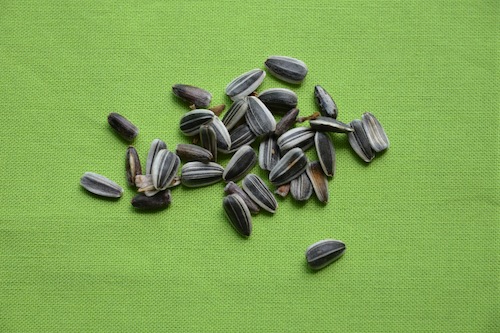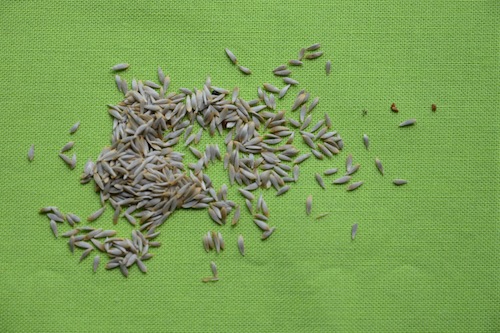5 Tips for Successful Sowing
September is National Sewing Month, but I figured why not employ the homonym sowing and celebrate in the garden!
Seed sowing can be tricky sometimes, especially if you’re new to gardening. So, whether you are in a warm climate and getting ready to plant your cool weather garden, are in a cool climate and starting to collect seeds for next spring, or are preparing for a greenhouse garden, these 5 tips for successful seeds sowing will come in handy!
And remember to check the Seeds to Sprout at the end of the post to see if you won a spot in the Herb Studies Workshop!
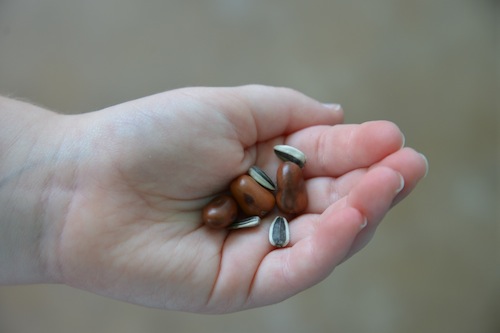
So much potential in little hands and little seeds.
1. Choose your soil wisely.
Choose a high quality sprouting mix for your seedlings. Light airy soil will support germination as well as provide a great growing environment for your baby sprouts.
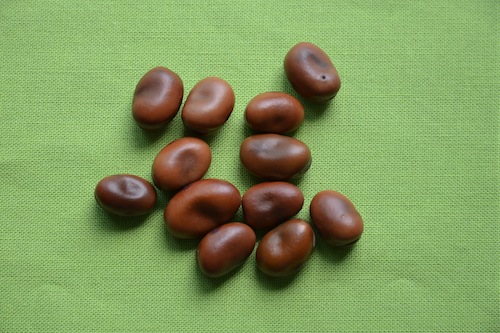
Fava Beans are big with thick shiny seed coats. They sprout well with pretreatment.
2. Don’t plant too deep.
Plant the seeds no deeper than recommended on the seed pack or recommended from a reliable source. Planting too deep will prevent germination. Some seeds need light to germinate, so be sure these seeds are just sprinkled on the surface of the soil and pressed in gently to establish good contact with the damp soil. A rule of thumb is big seeds are always planted deeper than tiny seeds.
Sunflower seeds have a tough seed coat to protect it from the acids and grit in animal stomachs.
3. Keep them wet.
Unlike a gremlin who should never get wet, you never never want to let you seeds dry out! Whether sowing inside or out, keep the soil evenly damp but not soggy. A mist setting on a hose or spray bottle work great for keeping the top layers of the soil damp. Keep the lower levels damp by watering from the bottom. This is easy, just sett the container in a bowl or tray of water and let the soil wick water up through the drainage holes.
Lettuce seeds are very small, and in most cases and climates easy to sprout.
4. Keep them warm.
Seeds need heat to germinate. A general temperature between 65-75˚F is good for sprouting most vegetable seeds. Regulate indoor temperatures by placing your seeding containers near a heater or very sunny window, but be sure to check that the heat isn’t drying out the soil! Regulate outdoor planting temperatures by following the calendar and frost dates in your area and plant accordingly.
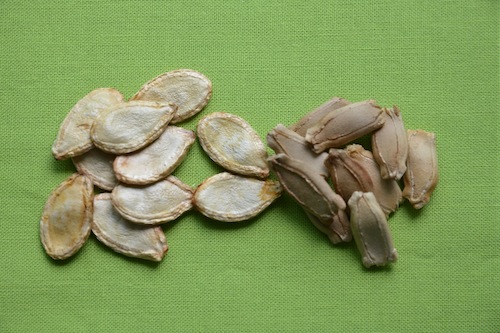
Squash and gourd seeds germinate in about a week in soil 70-90˚F. In soil colder than 60˚F, they are likely to rot.
5. Pretreat the seeds.
Most seeds don’t need it, but some seeds require a little extra coercion to sprout due to extra tough seeds coats or other seed protectors like sprouting enzyme inhibitor chemicals. If you seem to never have any luck sprouting a particular seed type, try one of these pretreatment methods to coax stubborn seeds into sprouting more quickly. Once you pretreat a seed, sow it asap.
Soaking
This is the easiest method and can be done with almost any seed. Simply soak the seeds in water for 4 hours to 12 hours, rinse in fresh water, and then sow. Over soaking will cause the seeds to decompose. (I over soaked cotton seeds once and it smelled sooo terrible!!!!)
Soak: *peas *beans *nasturtium *corn *sunflower *beets *basically larger seeds.
Scarification
This is easily done by scuffing seeds against medium grit sandpaper.
Scarify: *papaya *morning glory *lavender *squash *canna lilies *roses *bluebonnets
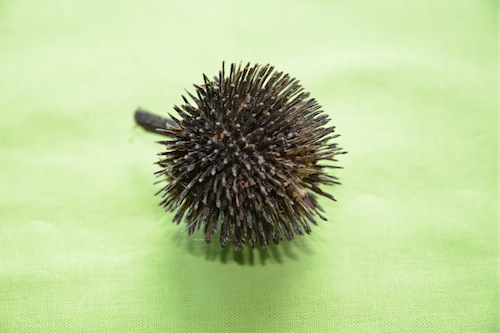
Coneflower, or echinacea, seeds need cold temperatures to sprout.
Stratification
This is done in nature by planting seeds before winter, but can be replicated by soaking seeds for 24 hours, then placing on a damp paper towel or growing medium (like coir or sphagnum moss) in a plastic bag or container and chilling in the fridge for 1-4 months depending on the seeds.
Remove the seeds from the fridge for a few days every couple weeks and water if needed to make sure the medium hasn’t dried out. What you are doing is mimicking the freeze thaw patterns in nature, so this is a good trick for people in hot climates wanting to force cooler temperature seeds like lettuce.
Stratify: *purple coneflower *lettuce (in the tropics) *lavender *butterfly bush *sweet pea *rudbeckia *evening primrose
Let this year’s National Sewing Month set you up for success with these sowing techniques!

